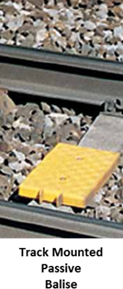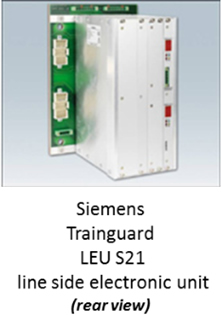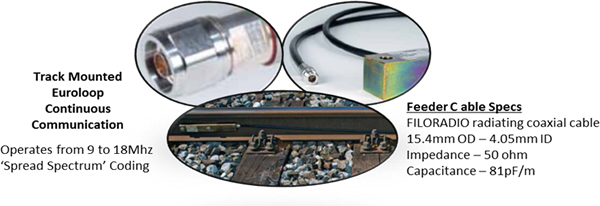European Train Control Systems Gone Global
European Train Control Systems Gone Global
 The European Railway Traffic Management System (ERTMS), established in 2007, began as a major industrial project initially developed by eight members of the Association of the European Rail Industry (UNIFE) — Alstom Transport, Ansaldo STS, AZD Praha, Bombardier Transportation, Invensys Rail, Mermec, Siemens Mobility, and Thales — in close cooperation with the European Union, railway stakeholders, and the GSM-R industry.
The European Railway Traffic Management System (ERTMS), established in 2007, began as a major industrial project initially developed by eight members of the Association of the European Rail Industry (UNIFE) — Alstom Transport, Ansaldo STS, AZD Praha, Bombardier Transportation, Invensys Rail, Mermec, Siemens Mobility, and Thales — in close cooperation with the European Union, railway stakeholders, and the GSM-R industry.
ERTMS’ initial focus was to replace the different and generally incompatible national train control and command systems across Europe in an effort to create a seamless railway system expected to increase European railways’ competitiveness. The demonstrated effectiveness of this system has positioned it to spread beyond European borders. This humble “project” has now gained acceptance and momentum to become the premier train control system for installations worldwide.
ERTMS is built upon two basic interactive platforms:
- The European Train Control System (ETCS), an automatic train protection system (ATP) conceived to replace the existing ATP systems, unique to each country of origin.
- Global System for Mobile Communications – Railways (GSM-R), a radio system for providing voice and data communication between the track and train, based on standard GSM using frequencies augmented with functions specifically reserved for rail applications.
The equipment required to support ERMTS is located trackside (on the tracks themselves as well as next to them), within locomotion units, along with remote control and information points such as stations and control centers. This equipment is comprised of many individual components and subsystems requiring myriad of interconnect devices, both electronic and electrical.
Connectors typically found in the ERMTS systems include, but are not limited to:
 RF connectors: BNC, TNC, N, and SMB styles
RF connectors: BNC, TNC, N, and SMB styles- Terminal blocks and barrier strips
- Solderless terminals
- Circular: metal shell, plastic, rectangular, M8, and M12
- Backplane: two-piece PCB, wire-to-PCB, and USB
- Telecom: RJ45 shielded and filtered
- Rectangular: Subminiature D; 9, 25, and 37 circuit
In addition to the connectors, one also encounters strain reliefs, cable clamps, and shielding devices of all configurations and sizes, as evidenced by the vehicle on-board computer shown above.
 Although the on-board systems represent high-volume, complex interconnect opportunities, it is important to address the basic building block of the ERMTS system, which begins with trackside collection of data.
Although the on-board systems represent high-volume, complex interconnect opportunities, it is important to address the basic building block of the ERMTS system, which begins with trackside collection of data.
Each time a train passes a fixed-data balise containing a permanently stored data packet, it transmits this packet to a corresponding antenna onboard the vehicle.
The antenna then activates the balise by emitting a low-power signal. The balise uses this power to transmit its information back to this dedicated balise/loop antenna. The information received is used by the on-board computer (see above) for train supervision purposes and serves as a basis for the data presented on the display in the driver’s cab.
 Optionally, balise variants that transmit variable data are available. These versions are controlled by a trackside electronic unit, which is connected via a permanently attached cable, such as the Siemens Trainguard LEU.
Optionally, balise variants that transmit variable data are available. These versions are controlled by a trackside electronic unit, which is connected via a permanently attached cable, such as the Siemens Trainguard LEU.
Balises have been developed, tested, and certified on the basis of the European Union’s TSI (Technical Specification for Interoperability) and are considered universal in application as they are expected to effectively interface with any manufacturer’s system.

ERTMS is now widely considered the leading railroad control system being implemented worldwide. This system provides significant advantages in terms of maintenance cost savings, safety, reliability, punctuality, and traffic capacity.
For these reasons, ERTMS is becoming increasingly successful beyond the borders of the European Union where it was initially conceived. New installations have appeared in China, New Zealand, Mexico, and South Africa as new providers have embraced the system and have positioned themselves and the overall market for excellent growth.
Recognizing this growing potential, GE Transportation, a global provider of innovative rail products and services, announced in April 2012 that it is launching a new European Train Control System (ETCS) and Computer-Based Interlocking system product offering. These systems will be part of a new GE portfolio of rail signaling solutions to be known as Tempo, which is expected to solidify GE’s global rail industry presence.
The market dynamics of the signal and control aspects of the rail industry have become very fluid with new entrants as well as consolidations and mergers. Siemens AG confirmed in November 2012 that it had agreed to purchase Invensys Rail, the signaling arm of the UK-based industrial automation group.
Not only will this acquisition strengthen Siemens’ leadership in ERTMS, but it offers the company a platform into North American Positive Train Control (PTC) via well-recognized and established brands such as Safetran, Westinghouse, and Dimetronic.
The Rail Safety Improvement Act of 2008 as enacted by the United States Congress requires all Class I railroads (freight) and passenger rail operators to implement a mandatory Positive Train Control (PTC) collision avoidance system by December 31, 2015.
The PTC technology must be installed on all main-line tracks where intercity passenger railroads and commuter railroads operate. Although PTC systems do not perform the same functions as ERTMS, there are many conceptual synergies between the rival systems, such as trackside componentry and central command center participation.
PTC introduces continuous GPS-based location and speed tracking, with more sophisticated on-board wireless technology for enforcing movement authority from a centralized control center, wherever the vehicle may be. PTC will be inherently more reliable, and offer greater real-time functionality over conventional installations.
No matter how one might view the global rail industry, the signal and control aspects are poised for significant growth via both ERTMS and PTC for the next three- to five-year time frame, driving outstanding interconnect opportunities.
- Satellites and 3D Radar Will Drive the Aviation Evolution - October 6, 2014
- Regenerative Braking Systems in Rail Applications - February 13, 2014
- Reinventing Your Wheels: Auto Convergence Technology - November 18, 2013

